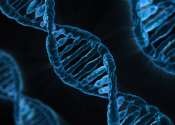CRISPR halts Duchenne muscular dystrophy progression in dogs
Scientists for the first time have used CRISPR gene editing to halt the progression of Duchenne muscular dystrophy (DMD) in a large mammal, according to a study by UT Southwestern that provides a strong indication that a ...
Aug 30, 2018
0
1002







